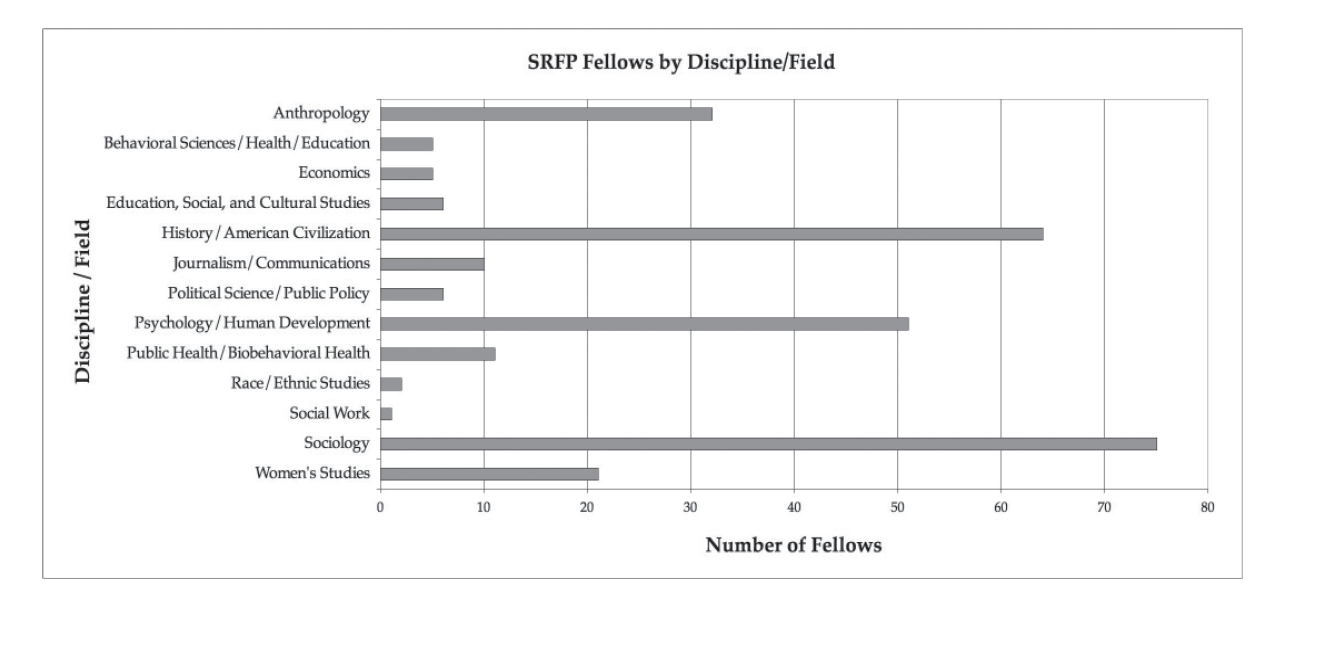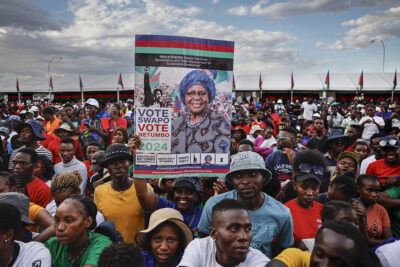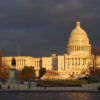Historical context
In 1995 the SSRC published Sexuality Research in the United States: An Assessment of the Social and Behavioral Sciences,1Diane di Mauro, Sexuality Research in the United States: An Assessment of the Social and Behavioral Sciences (Social Science Research Council, 1995). commissioned by a group of private foundations. Concerned about the growing controversy and lack of funding for such research by the private and public sector, the foundations were interested in knowing the current status of sexuality research in the United States. Following a fact-finding assessment project hosted by the SSRC called the Sexuality Research Assessment Project (1992–1995), the report was published and widely disseminated among these foundations. According to the report’s findings: “Comprehensive data on contemporary sexual behaviors, attitudes and practices are not available, nor is it understood how they are shaped by different societal, cultural and familial contexts…there is no consistent support to conduct behavioral and social science research focusing on human sexuality…the lack of which has created a substantial dearth of knowledge which in turn has sustained many of the social crises evident in the U.S. today.” The report called for sufficient and consistent support for sexuality research in the social sciences to address specific gaps in the research agenda and throughout academia, as well as support for the much-needed training of researchers. Among a number of possible mechanisms and activities, the report strongly recommended that “formal fellowships in the social science degree programs should be provided.”
“In 1996 the SSRC provided fellowships to the first cohort of dissertation and postdoctoral scholars for social and behavioral research on sexuality conducted in the United States.”In September 1995 such a formal fellowship program, the Sexuality Research Fellowship Program (SRFP)—the first and only one of its kind—was designed and launched by the Social Science Research Council. In 1996 the SSRC provided fellowships to the first cohort of dissertation and postdoctoral scholars for social and behavioral research on sexuality conducted in the United States. With continuous and generous support from the Ford Foundation for the next ten years, the SRFP cultivated a new generation of scholars, helping them to address the complexity and contextual nature of human sexuality via research, to promote methodological diversity and innovation, and to make contributions that link the study of human sexuality to the intellectual trajectory of their own disciplines—a tremendous accomplishment that has considerably strengthened the field known as “sexuality research” in the United States. In providing this support, the SRFP has significantly helped to broaden both theoretical and applied interdisciplinary research, promote research collaboration between established researchers and the next generation of scholars, and advance a more useful dissemination of research that informs policy decisions regarding important social and sexual health issues. At the same time, the work of the SRFP stands in stark contrast to the kind of research on sexuality issues and topics that has been historically supported (typically by federal agencies and to a lesser extent, by private foundations), namely research on sexuality that falls squarely within the public health model of infection/disease prevention, teenage pregnancy prevention, and/or research pertaining to reproductive health.
The selection process
During its ten years, the SRFP awarded 153 fellowships, 101 at the dissertation level and 52 at the postdoctorate level, supporting a significant number of the scholars who would continue to conduct sexuality research across the social sciences and humanities. SRFP fellows are just now beginning to emerge as leading scholars in the field. Each year about 100 applications were received and of those, approximately 10 dissertation and 5 postdoctorate fellowships were awarded.
The selection process was unique in two primary ways. Applicants were required to apply with a research mentor, a more advanced researcher with significant expertise in sexuality research who had specialized knowledge/experience pertaining to the research focus and methodological approach of the applicant. In the application, research mentors were asked to provide a concrete plan for training and advising the fellow during the fellowship tenure, including how ongoing feedback and evaluation of the research progress would take place, and how their mentorship would assist the fellow in achieving research objectives. Research mentors received small stipends as compensation for their mentorship and training during the fellowship tenure.
The second unique and crucial attribute of the selection process was the SRFP Selection Committee. Composed of senior scholars, researchers, and practitioners from across the social sciences, humanities, and social policy fields, the SRFP Selection Committee represented a wide range of specialized expertise and experience pertaining to sexuality. Fellows were selected in a highly competitive process that began with evaluation by a primary and secondary reviewer from the committee six weeks prior to the meeting and ended with an extensive presentation at the selection meeting of the relative strengths/weaknesses of the application by those reviewers, followed by a discussion and two rounds of voting on each application. The presentations made by the reviewers at the meeting focused on the quality, value, and feasibility of the proposed research, training, and dissemination plan; its anticipated contribution to existing knowledge about sexuality; the applicant’s expertise and breadth of knowledge; and the appropriateness of the research environment and institutional resources. In deciding which research proposals to fund, senior scholars discussed disciplinary and interdisciplinary methodologies, issues/topics pertaining to sexuality needed to fill the crucial gaps in the research agenda for the field, and its overall composition and future directions. By serving on the selection committee—which rotated in a staggered manner every two years—these scholars became acquainted with research being conducted by the newest generation of scholars in the field. It was this committed, collaborative effort year after year that helped to ensure the success of the SRFP—an effort that cut across disciplines, theoretical predispositions, and methodological approaches to identify what constituted excellence beyond their own disciplinary and theoretical boundaries.
Applicants and fellows
The SRFP was focused on the need for diversity from its inception—diversity in terms of the fellows, the mentors, and the selection committee members with regard to gender, orientation, ethnicity, theoretical framework, discipline, university affiliation, research focus, methodological approach, and diversity in terms of the communities researched. We continually documented how “diverse” we were over the course of the program’s tenure. Applicants and fellows hailed from approximately 100 universities across the United States that served as institutional hosts during the fellowship tenure, for which they received a small stipend.

The SRFP fellows represented a wide range of disciplines. Although largely concentrated in history, sociology, psychology, and anthropology, applications were received from many other disciplines: demography, economics, education, ethics, cultural and women’s studies, and political science, as well as the biomedical/physical sciences, nursing, law, and clinical fields. The supported research consisted of a variety of both qualitative and/or quantitative research methods, including a range of qualitative and quantitative approaches to data collection and analysis, participatory and comparative research methods, and both basic and intervention research on human sexuality.
Research
To assess how the program has contributed to the knowledge base of human sexuality, we offer a brief overview of the topics researched over the ten years. Funded projects have covered a wide range of issues within the broad domains of sexuality, politics, society, culture, and biomedical foci:
• the diversity and distribution of sexual values, beliefs, and behaviors within different populations and their meanings for individuals
• the dynamics of sexual relationships including cultural and social networks among and between men and women
• how individual behaviors, abilities, attributes, motivations, and practices contribute to sexual health
• the role of social institutions—including religious institutions, schools, and the media—as well as the role of the family/parents in establishing, maintaining, and shaping sexual norms, values, attitudes, and behaviors
• the diverse socializing processes among different ethnic and cultural groups in the United States and the impact of immigration/migration
• the factors and processes that shape sexuality at different developmental junctures
• sexual physiology and the etiological factors of those identified as sexually dysfunctional
• the ramifications of physical and mental disability on the development of sexual behaviors and values and on sexual physiology
• the impact and effects of drug, alcohol, and pharmaceutical use on sexual behaviors
• sexual orientation, lifestyles, and relationships, including homophobia and mental health
• gender identity, focusing on how individuals conceptualize their gender roles and/or “enact” gender in various cultural contexts and with regard to sexual behaviors and relationships
• how sexuality is constructed for different gendered individuals and the meanings given to this process
• ethical concerns and human rights policy related to surgical interventions for intersex individuals
• how gender identity and gender role behaviors develop and the sexual impact/significance for those considered part of the sexual minority;
• obstacles to transgender equality regarding issues of access, recognition, and safety in the policy arena
• sexual and reproductive health, including how reproductive behaviors, decisions, and status affect one’s sexuality and the impact on sexuality of new reproductive technologies;
• the intersection of gender, power, violence, and sexuality, including analyses of pornography, forced migration, and sexual slavery
• biomedical frameworks of sexuality and functioning;
• STIs, HIV/AIDS, and sexual rights, including analyses of stigma and discrimination
• sexual politics, social movements, and sexual citizenship;
• historical and current analyses of the role of sexual science in the United States
• analyses of US military policy regarding sexual orientation, and
• sexuality and information technology/internet systems as a new form of sexual education and source of sexual information.

This wide range of topical areas reflected research focusing on diverse populations, including: homeless youth, gay parents, people working in pornography production companies, people migrating from Cuba, Mexico, Puerto Rico, Asia, and the South Pacific Islands, sexuality education teachers and administrators, women with diminished androgen levels, older gay men, Cuban gay men, men who frequented gentlemen’s clubs, men with cerebral palsy, transmigrant Japanese and Chinese women, semen donors, Christian Right organizations, couples taking Viagra, and women observing Jewish purity laws and mikvehs.
Another dimension of the research conducted by SRFP fellows is a focus on social and political movements across time and space, including: white slavery in early twentieth-century Chicago, New York, and San Francisco; the sexual liberation movement of postfascist West Germany; the leather community in San Francisco in the 1960s and 1970s; slumming in the early twentieth century; antihomosexual violence in Holland; Storyville, New Orleans, and the construction of sexual desire; sexual transgression in Las Vegas; masculinity in the colonial United States; and the Abstract Expressionist art world of early eras, to name just a few.
Cross-disciplinary networking and engagement
In addition to the cross-disciplinary composition of the SRFP Selection Committee, two other important features reflect the program’s high priority of expanding the boundaries of the field and engaging a variety of scholars, researchers, and other professionals working in programmatic and policy venues in the area of sexuality research.
Research dissemination
An important goal of the program was to promote more relevant research dissemination in order to inform important social and public health issues, to strengthen existing research networks and create new ones. From the inception of the program, mechanisms were put in place to promote such dissemination, the most significant being that all fellows were required to submit a formal dissemination plan—both within and beyond academic circles—as part of their research application. These dissemination activities were wide ranging. Some were of the more traditional format, such as “brown bag” lunches or in-house weekly seminar series; others were large-scale initiatives that required significant time and energy to organize and carry out as well as supplementary funding from the university host or department.
Another key venue for dissemination and networking was the annual Fellows’ Conference. This event provided a noteworthy opportunity for fellows, senior researchers, selection committee members, and invited guests to come together to discuss work in progress, gain a greater understanding of crucial research issues, and form productive alliances.
“The meetings provided the SRFP fellows with an unparalleled opportunity to become more familiar with the work of researchers across the spectrum of the field.”The SRFP Fellows’ Conference was held over a three-day period in the fall, each year taking place at a different location either on the West Coast, East Coast, or in the Midwest United States; by changing location (and venue, since these annual meetings were cohosted by SRFP colleagues at various institutions and organizations across the country), the meeting provided an excellent networking venue and, at the same time, showcased the ongoing research activities and programmatic initiatives of the local host. The meetings provided the SRFP fellows with an unparalleled opportunity to become more familiar with the work of researchers across the spectrum of the field. Over the course of ten years, these meetings were held in conjunction with various SRFP “allies” and cohosts. On the East Coast this included the HIV Center for Clinical and Behavioral Studies, the Sociomedical Sciences Department of the Mailman School of Public Health, and the Program for the Study of Sexuality, Gender, Health and Human Rights (all three based at Columbia University), the Center for Lesbian and Gay Studies at CUNY, and the Center for the Study of Gender and Sexuality at NYU. On the West Coast, SRFP cohosts included the National Sexuality Resource Center, the Program in Human Sexuality Studies, The Gay, Lesbian, Bisexual and Transsexual Historical Society of San Francisco, and the Cesar E. Chavez Institute (all based at San Francisco State University); the Midwest region cohost was consistently the preeminent Kinsey Institute for Research in Sex, Gender and Reproduction at Indiana University. When cohosted by the Kinsey Institute, SRFP fellows were afforded the additional opportunity of conducting research and touring the large and world-renowned archival and library collection housed at the Institute.
The common format for each Fellows’ Conference was shared presentations by fellows, SRFP committee members, and invited guests; large and small group discussions, and scheduled one-on-one conversations between participants. Another feature at each conference was the “wrap up” panel in which former fellows would share their thoughts about the SRFP fellowship experience and provide recommendations and other useful information for those beginning an SRFP fellowship.
Where each conference differed was in terms of the far-ranging array of panel presentations by SRFP fellows, committee members, and scholars representing the local host institution. Much diversity was found in these presentations, with topics ranging from historical images of Asian sexuality in 1800s San Francisco to the utilization of laboratory and field methodologies to address topics of sexual arousal, mood, risk taking, and condom use; from the controversies of NIH-funded sexuality research initiatives to the pedagogy of values clarification in diverse programmatic and educational settings.
The SRFP Fellows’ Conferences typically piggybacked onto other association or professional meetings in order to allow fellows to attend and present their work concurrently with the SRFP meeting. Some examples include the multidisciplinary SFSU conference entitled, “Kinsey at 50” focusing on the influence of Kinsey’s work on American society, and the annual meetings of both the Society for the Scientific Study of Sexuality and the International Academy of Sex Research.
The SRFP capstone event
As the program drew to a close last year, the SRFP hosted a capstone event. The gathering, held in Santa Ana Pueblo, New Mexico, was an apt closure for a program that thrived on bringing people together to discuss, network and plan collaborative efforts. Titled State(s) of Sexuality, the event brought together over 150 fellows, selection committee members, and research mentors to commemorate the program’s achievements over its ten years of fellowship support and its contributions to strengthening and legitimizing sexual research. The event represented a “meeting of the minds” in which the participants took stock of the sexuality research field and together postulated what the future might hold for new research directions and developments. During the plenary panel, “Gazing Into the Crystal Ball: Prophecies for the Field, 10 Years Hence,” senior scholars and researchers offered their views on the potential of the sexuality research field over the next ten years.
“The workshop addressed participants’ concerns in dealing with the media and identified basic rules of media engagement, providing each person with the opportunity to practice interview situations and receive constructive feedback and tips on how to improve their interview skills.”Over the course of the two days, a number of diverse, simultaneous group discussions took place focusing on the disciplinary areas of ongoing work and their respective methodological approaches, and on topic themes. A media presentation and skills-building workshop addressed the issue of how best to work with the media and provided participants with the opportunity to examine various types of interview situations—including TV stand-up and office interviews, print interviews on the phone and face to face, and radio talk show interviews with call-ins. The workshop addressed participants’ concerns in dealing with the media and identified basic rules of media engagement, providing each person with the opportunity to practice interview situations and receive constructive feedback and tips on how to improve their interview skills.
Capping the event was the final SRFP banquet dinner featuring remarks by Craig Calhoun, SSRC president, and Susan Berresford, past president of the Ford Foundation, who provided reflections on both organizations’ investments in sexuality research over the past ten years. Diane di Mauro provided words of thanks and introspection regarding her ten-year tenure as the SRFP director, and was in turn lauded by the SRFP fellows and the SRFP selection committee. The banquet dinner aptly concluded with the presentation of bronze medallions to the capstone attendees, inscribed with the words, “SSRC Sexuality Fellowships.” These medallions were specially designed for the event and were based on the original bookplate used for the library collection of the Kinsey Institute for Sex Research, designed by R. L. Dickinson in 1947 and produced with the permission of the Kinsey Institute.
The lasting legacy of the SRFP and its impact on the sexuality research field
Through its fellowship program, the annual SRFP Fellows’ Conference, the selection process and committee meeting, and the subsequent professional work by SRFP fellows in the sexuality field, the Sexuality Research Fellowship Program has fostered an interdisciplinary network that is expected to become the foundation on which the next generation of scholars will continue to build the field of sexuality research in the United States. This important program has achieved two significant milestones: first, it has promoted a profound change in awareness and attitude, demonstrating that it is both legitimate and feasible to pursue a professional career in sexuality research within a wide variety of academic disciplines that are not directly linked to public health. Second, it has spawned a new generation of scholars who are willing to take risks in terms of what they choose to investigate about sexuality and whom they engage in the process.
The SRFP has not only critically expanded the knowledge base of human sexuality but created a diverse cohort of scholars and practitioners with expertise across a wide range of timely sexuality topics and issues. What is equally significant is this cohort’s approach to research, which can be characterized as more policy-relevant, attuned to integrative research methodologies, and dedicated to more useful research dissemination. It is this sensibility that they are passing on to the next generation of scholars and professionals, who in turn will contribute to the field at many levels for years to come.
The policy focus represented only the last year of the SRFP fellowship. While it is unclear what this new direction of the SRFP might have achieved over time, what is clear is the need to forge links between sexuality research and policy arenas, both within and outside academia. In this regard, important ongoing work is addressing these concerns: the promotion of research efforts designed to ensure effective application of sexuality research to local, state, and national policy issues; increased inclusion of sexuality issues in current policy work; and support for researchers to engage in policy-related issues as an integral part of their professional and academic careers.
“Many fellows are working at NGOs both in the United States and internationally, at community-based organizations, in state and local health departments, on advisory boards of advocacy organizations, and in the federal government sector, such as at the CDC.”Building human capacity and promoting its development by strengthening a research field is a long-term process. There is considerable evidence, however, to indicate that the SRFP project has already produced a strong professional base in the field. To date, former SRFP fellows have produced over 100 professional journal articles and 35 books, contributed over 50 chapters to anthologies and volumes; provided over 275 presentations at conferences, and produced 2 films. Many former fellows are just now publishing books and journal articles on their supported work, so it can be expected that this tally will grow considerably. Overall, a considerable number of SRFP fellows have continued working in sexuality-related fields, both in terms of current employment and professional activities, attesting to the legitimizing benefit of consistent and sufficient funding for sexuality research in the social and behavioral sciences. Many are professionally active in related sexuality fields, already occupy tenure-track positions, and are currently participating on sexuality-related editorial boards for professional journals and organizations. Significantly, the majority of them have received postfellowship support in the form of honors and awards for their ongoing research. Many fellows are working at NGOs both in the United States and internationally, at community-based organizations, in state and local health departments, on advisory boards of advocacy organizations, and in the federal government sector, such as at the CDC. Some are using their research expertise to inform their current work in the following areas: adolescent sexuality, cross-cultural sexuality, economic issues of sexual identity, ethnicity and race, gender roles/socialization, reproductive rights, HIV/AIDS and sexual rights, homophobia and mental health, immigration and political economy, legal issues and sexual identity, religion and sexuality, sex work, and information technology as a new form of sexual education and source of sexual information.
What does the future hold?
One might postulate the future directions of the sexuality research field as follows:
1. Populations. Beyond the classic gender focus, age—especially middle age and beyond—will emerge as a particularly significant focus of human sexuality research; so too will research focusing on ethnic/cultural groups and sexual minorities, both within and outside of the United States.
2. Institutions. Here the focus will be on sexuality and policy development and implementation, especially as configured and/or constrained by certain institutions such as the school, prisons, faith-based institutions, and the internet.
3. Processes/Experiences/Language. Research will address the cognitive, analytic, and discursive elements of sexual functioning, response and behavior, with the pharmaceutical context emerging as crucial. As well, an experiential focus on sexuality will be emphasized, as in arousal, desire, pain, and coercion.
4. Sexuality in time and space. In this regard, the disciplines of history, psychology, and anthropology will probably continue to represent the majority of sexuality research in the social sciences, and as such, the research gaze will include: sexuality across the life span, sexual development and socialization, and sexuality within historical contexts, as in “looking back” to assess the historical significance of prior social movements, struggles and processes.
5. Movements. Closely related to policy research, research initiatives will focus on medicalization, urbanization, industrialization, and globalization. There will continue to be a significant expansion of research on social movements and sexual politics—especially identity politics within the arena of sexual and human rights, activism, and advocacy work.
While it is difficult to convey the significance of these sea changes in the field of sexuality research as a direct impact of the SRFP program, it is safe to conclude that the contributions of SRFP to strengthening the field of sexuality research are enormous and will continue to be considerable in the coming decades.
An agreement has been reached with the Kinsey Institute for Research in Sex, Gender and Reproduction (KI) at Indiana University to archive all of the SRFP program files and resource materials with the KI Archival Department. The collection includes fellowship applications (approximately 100 per year), SRFP fellow files and publications of supported work, and material pertaining to the selection process and the SRFP fellows’ annual conferences. The SRFP is pleased that its collection will reside in such good hands, as an integral component of the extensive archival collections currently housed at the Kinsey Institute.
Diane di Mauro has worked over 20 years in the field of human sexuality, specializing in the areas of sexuality research and education. She is currently the program director of the MAC AIDS Fund Leadership Initiative at Columbia University and UCLA, as well as assistant professor of clinical sociomedical sciences and the cofacilitator of the sexuality and health MPH specialized degree track at Columbia University. Di Mauro served as program director of the Sexuality Research Fellowship Program (SRFP) from 1995 to 2006. She is the author of Sexuality Research in the United States: An Assessment of the Social and Behavioral Sciences (SSRC, 1995).
This essay originally appeared in Items & Issues Vol. 6, No. 1–2 in the winter/spring of 2007–2008. Visit our archives to view the original as it first appeared in the print editions of Items.













